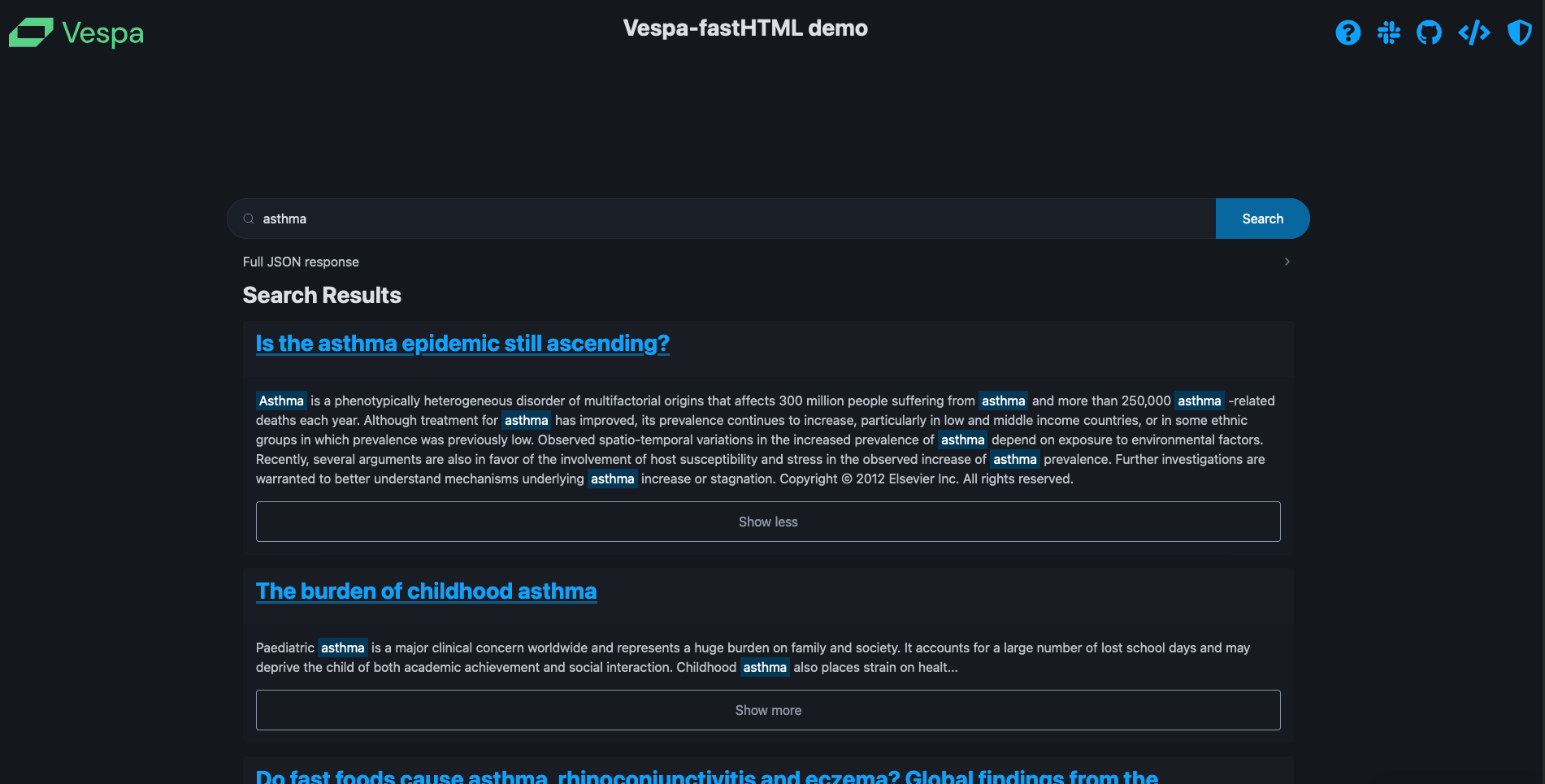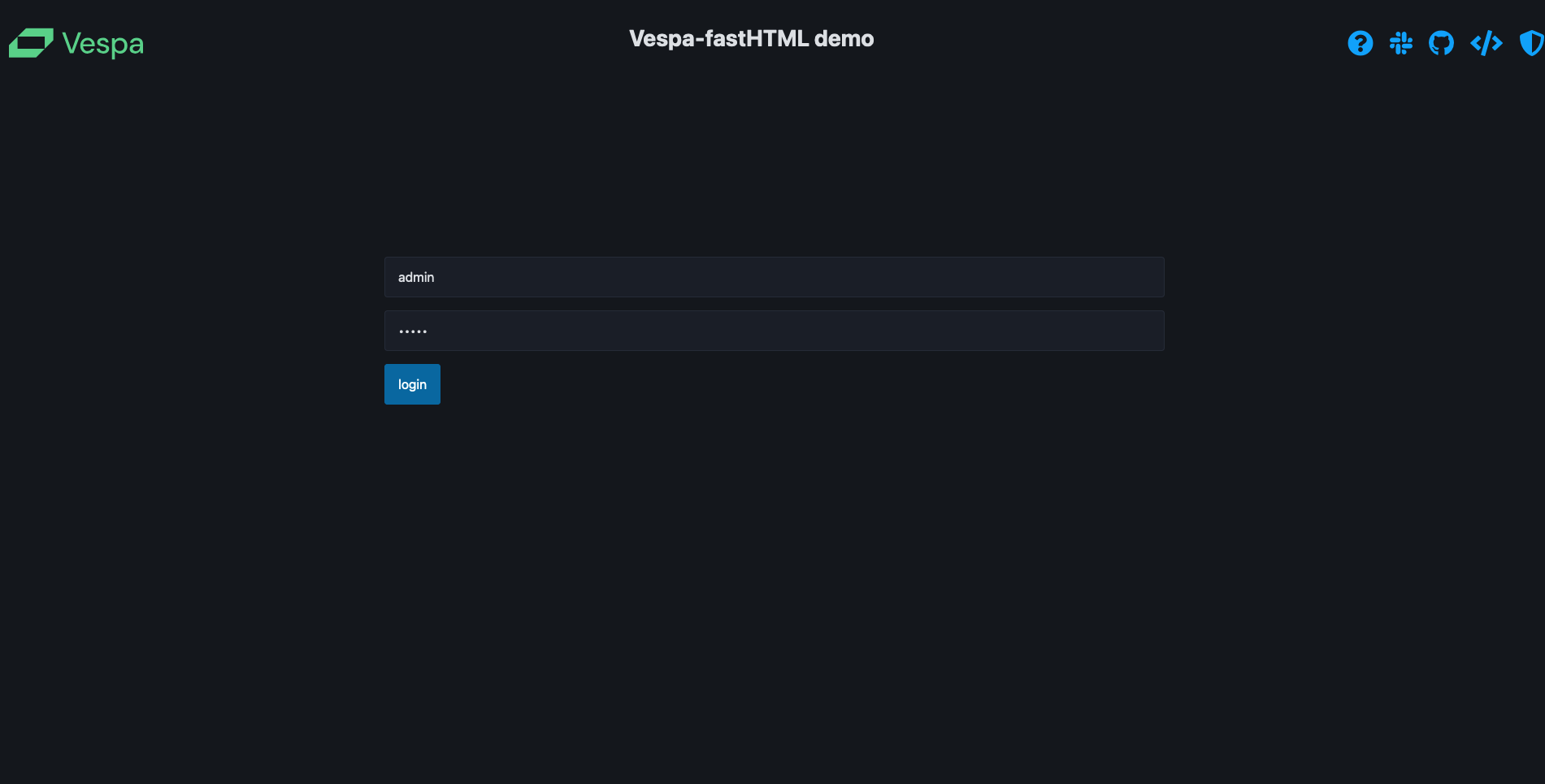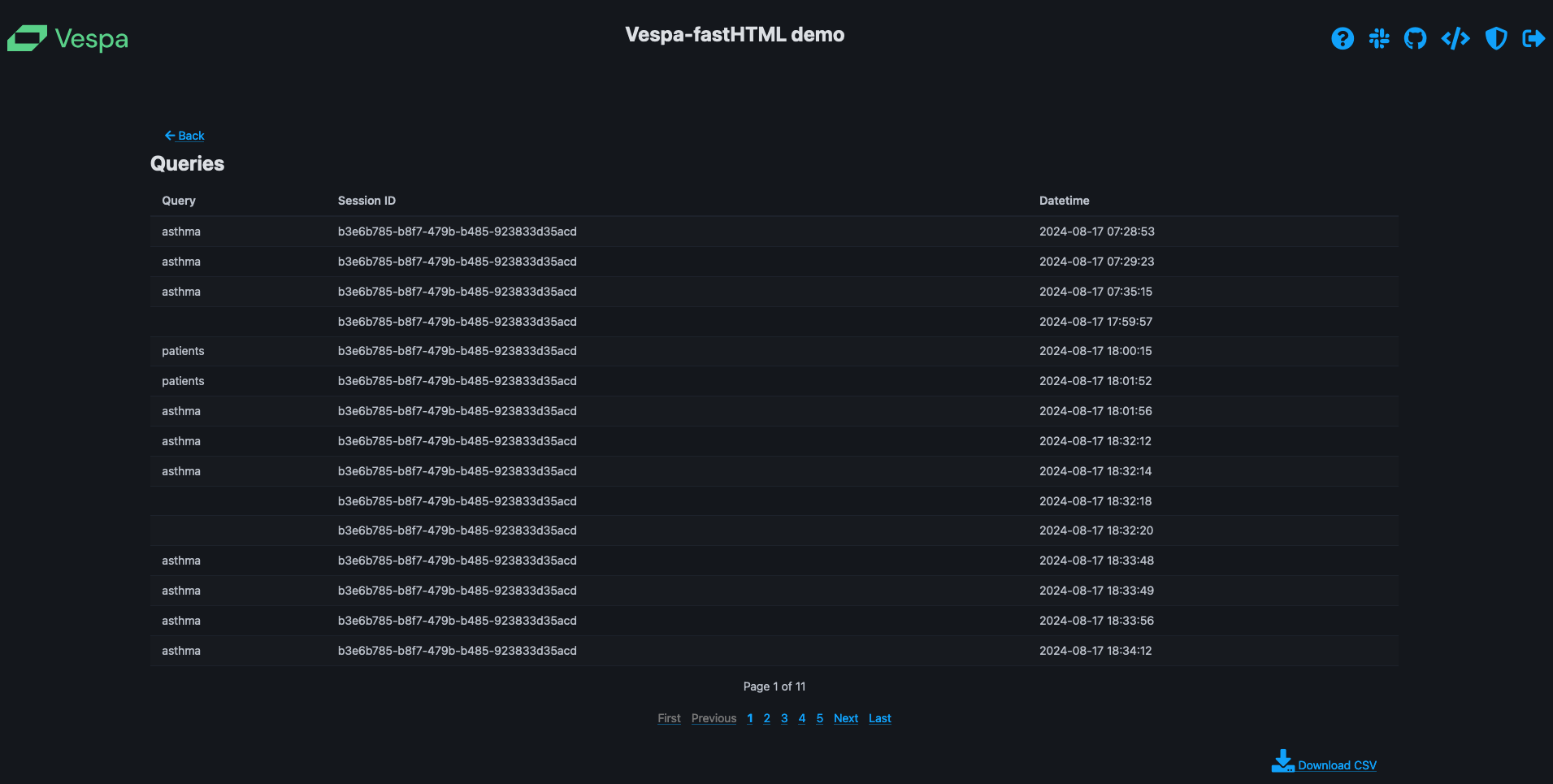Spaces:
Sleeping
title: thomasht86/fasthtml-vespa
emoji: 🚀
colorFrom: purple
colorTo: red
sdk: docker
app_file: app.py
pinned: false
termination_grace_period: 2m
FastHTML Vespa-frontend
This is a simple frontend for Vespa search engine. It is built using FastHTML and written in pure Python.
Features
- Simple search interface, with links to search results.
- Accordion with full JSON-response from Vespa.
- SQLite DB for storing queries.
- Admin authentication for viewing and downloading queries.
- Deployment options - Docker + Huggingface spaces.
Why?
We have recognized the need, both for ourselves and others, to be able to set up a simple frontend for Vespa, without having to navigate the frontend framework jungle.
This sample-app can serve as an example of how you can build and deploy a simple frontend for Vespa, using FastHTML.
How to use
1. Clone this folder to your local machine 📂
The command below will clone the repository and only fetch the fasthtml-frontend folder.
git clone --depth 1 --filter=blob:none --sparse https://github.com/vespa-engine/sample-apps.git temp-sample-apps && cd temp-sample-apps && git sparse-checkout set fasthtml-frontend && mkdir -p ../fasthtml-frontend && mv fasthtml-frontend/* ../fasthtml-frontend/ && cd .. && rm -rf temp-sample-apps
2. Install dependencies 🔧
pip install -r requirements.txt
3. Run the app locally 💻
python main.py
At this point, you should be able to access the app at http://localhost:5001.
But, you will not be able to search for anything, as your environment variables are not set up.
4. Deploy and feed your Vespa application ▶️
By running the deploy_app.ipynb notebook, you will deploy a Vespa application to the Vespa Cloud. The application is just a sample hybrid search application using the BEIR/nfcorpus dataset.
Feel free to replace the dataset and application with your own.
Make sure to replace these variables at the top of the notebook with your own values:
# Replace with your tenant name from the Vespa Cloud Console
tenant_name = "mytenant"
# Replace with your application name (does not need to exist yet)
application = "fasthtml"
# Token id (from Vespa Cloud Console)
token_id = "fasthtmltoken"
5. Set up environment variables 🔐
Make sure to add the output of the token_endpoint from the deploy_app.ipynb- notebook to your .env.example file.
This value should be placed in the VESPA_APP_URL environment variable.
At the same time, you should rename the .env.example file to .env. This is added to the .gitignore file.
6. Run the app locally 🚀
Now, you should be able to run the app locally and search for queries.
python main.py
Open your browser and navigate to http://localhost:5001.
Deployment
If you want to deploy the app, you set the DEV_MODE=False in main.py.
This will disable loading of environment variables from the .env file, and instead use the environment variables set in the deployment environment.
Docker 🐳
You can build and run the app using Docker.
Note that there are two Dockerfiles in the repo:
Dockerfileis for building the image for Huggingface Spaces.Dockerfile.nonhfis for building an image that can be run locally or on any other platform.
Build the image:
docker build -t fhtdemoimg . -f Dockerfile.nonhf
Run the container:
- Makes the environment variables in the
.envfile available to the container. - Will mount the
db/folder to the container, so that the SQLite database is persisted between runs. - Sets the hostname to
dockerhost, so that we can know use that to enable hot-reloading in the FastHTML app. - Maps the default Starlette port
5001to8000on the host.
docker run --name fhtdemo --rm --env-file .env -p 8000:5001 -h dockerhost -v $(pwd)/db:/code/db fhtdemoimg
Huggingface 🤗 Spaces
This deployment option is free. The deployment script is shamelessly copied from the fasthtml-hf repo. Check it out for details on cli-options, configuration and DB-backup options.
- Get a huggingface token with
writepermissions. You can do this by going to your Huggingface profile and create a new token. - Set the
HF_TOKENenvironment variable to the token you just created. - Run
python deploy_hf.py <your-space-name> [--private true]to deploy the app to Huggingface Spaces.


